
 
     |
| How to Replace Your V6 EGR Valve - Step by Step (Page 1/2) |

|
Bloozberry
|
MAY 26, 07:42 PM
|
|
About a week ago I went to take the Fiero out for a drive but found it idled strangely after start-up. The idle was high and when I goosed the gas it would stutter and stumble... definitely not normal. It didn't take very long to find the culprit: a broken EGR valve. Here's the sick patient:
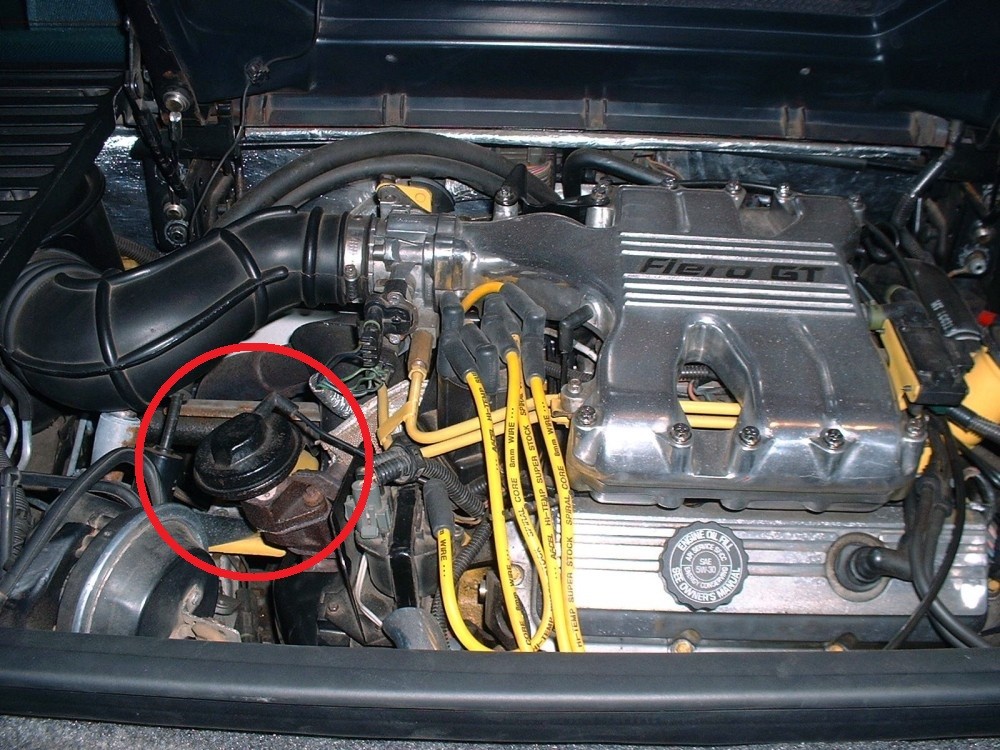
While the engine was idling, I could clearly see the valve vibrating strangely and that it was sticking up way to high. When I pushed it back down and it made a temporary seal against the base, the idle calmed back down and became steady:
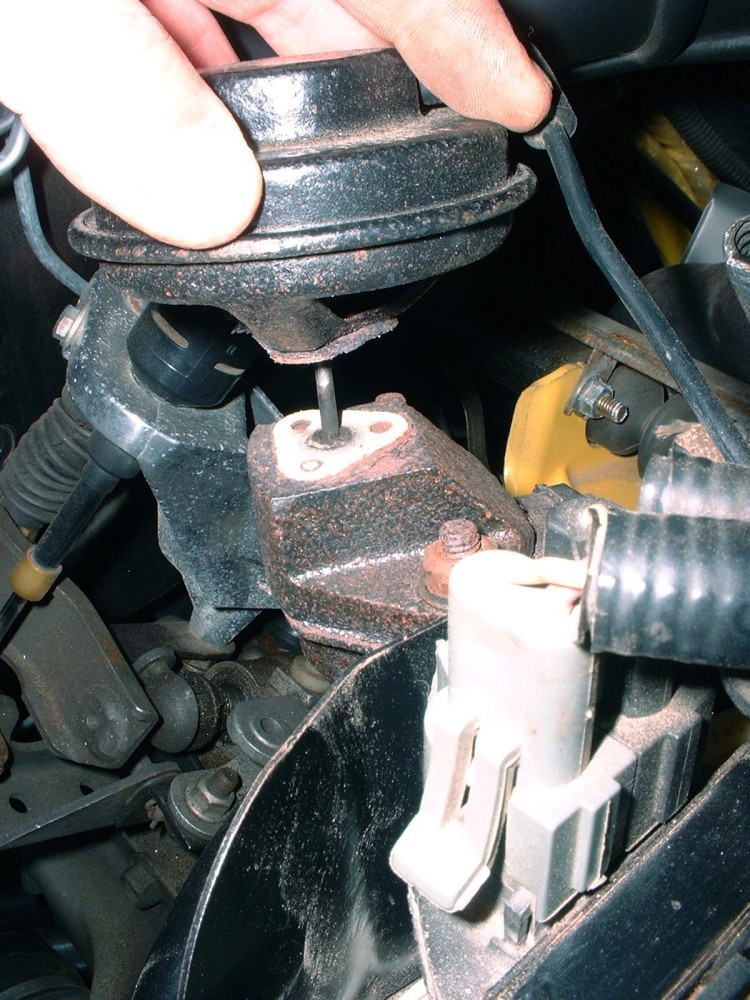
To replace the EGR valve, you don't need many tools. None of my socket wrenches had enough clearance to fit on the two locking nuts holding the EGR valve so I used a 13 mm box wrench to loosen them. On one of them, the nut came off with a little persuasion, but on the other, the entire stud came out instead:
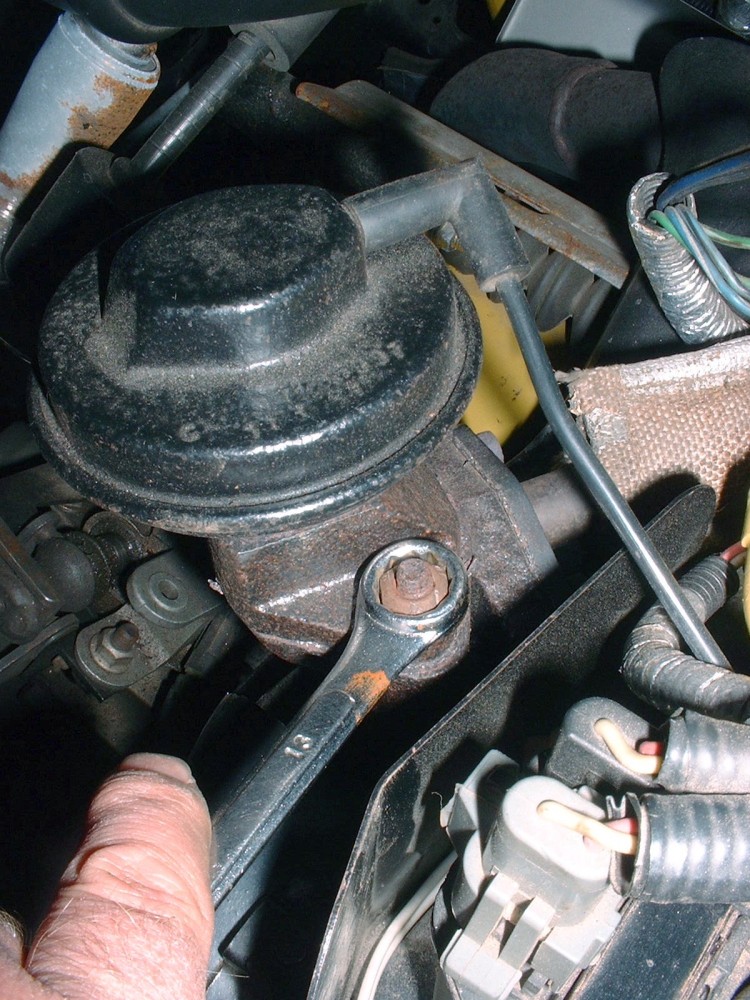
Here's a closer look at the problem. The diaphram was held to the base with three small diameter rivets that eventually broke. There was no way to replace the rivets since they were installed before the top half of the diaphram housing was crimped onto the bottom half. Once the two halves are joined together, there is no way to access the rivets. Don't throw out your old EGR valve at this stage since you may need some info off of it later.
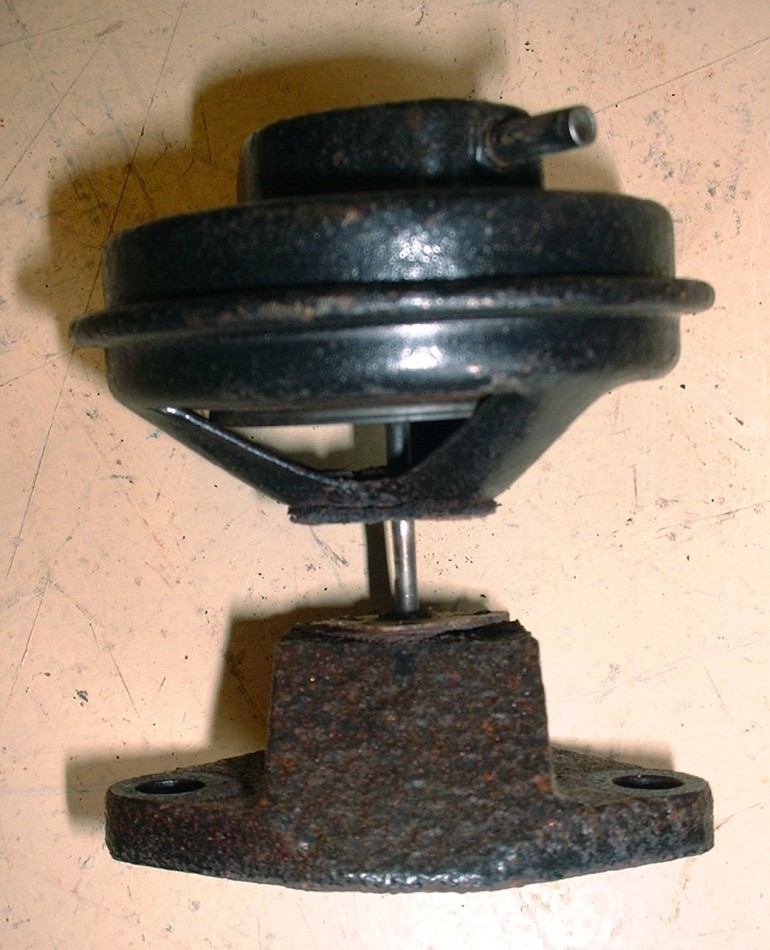
To get an aftermarket replacement valve, you don't need any special information other than the year, make, model, and engine size of the car. I bought a BWD valve for $57 because that's what my local supplier could get. Their part number is 023-0170-0 EGR889B.
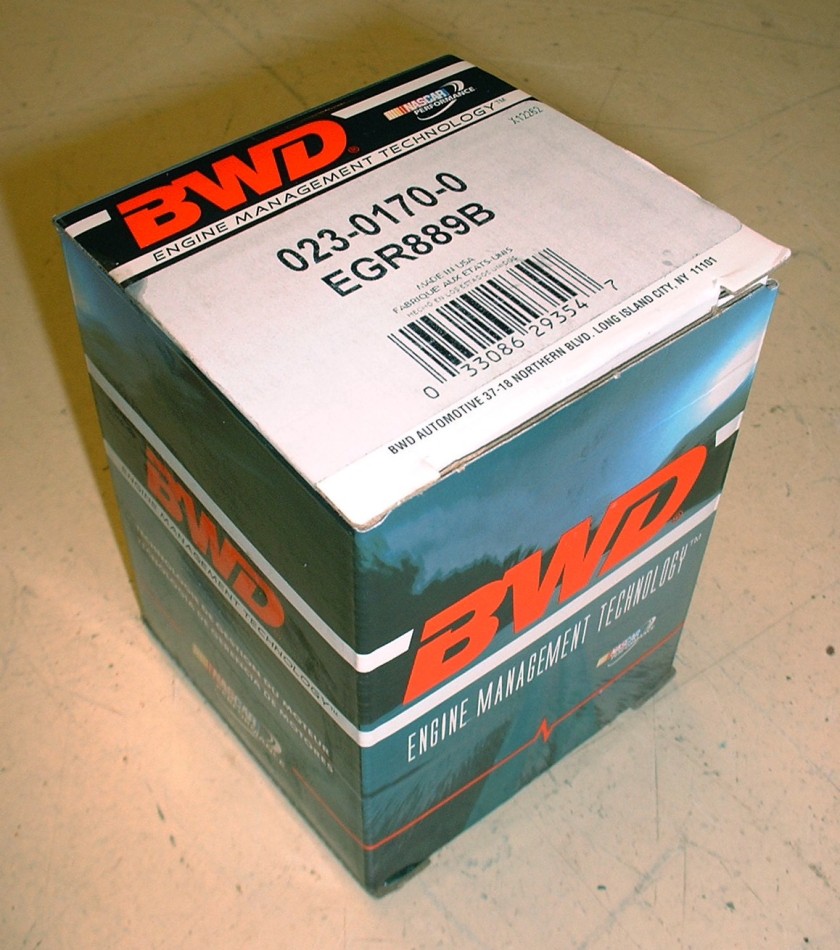
What you get in the box is the new EGR valve:
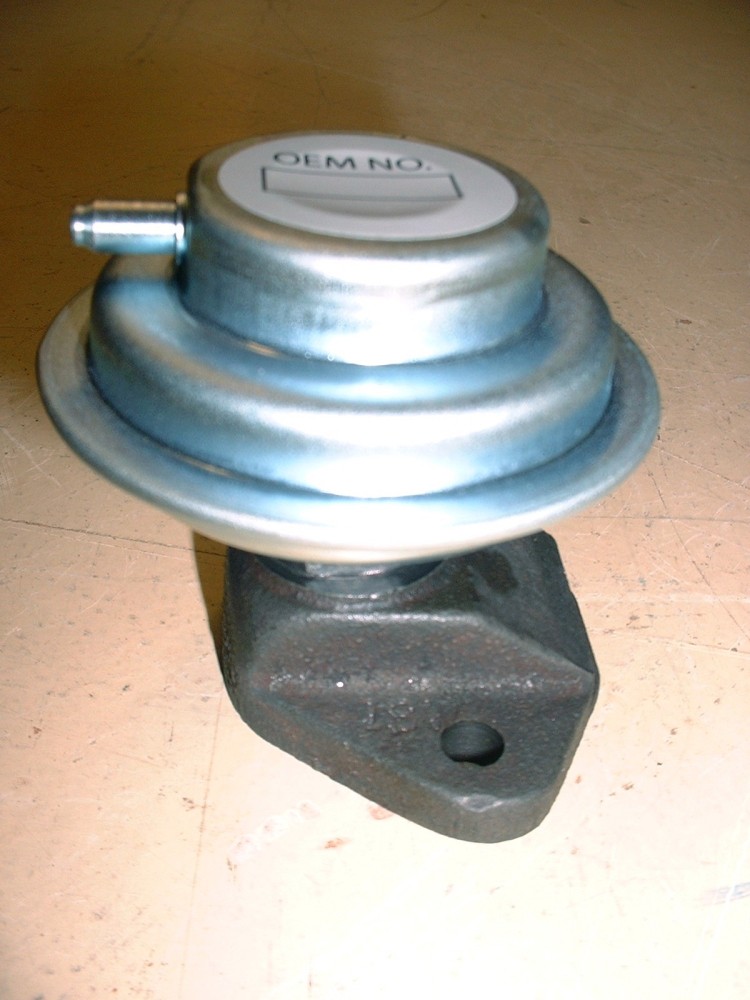
A bunch of special washers with different sized holes and a new gasket:

In my package I got 12 different washers each stamped with a different number (the one missing is the one I used.)
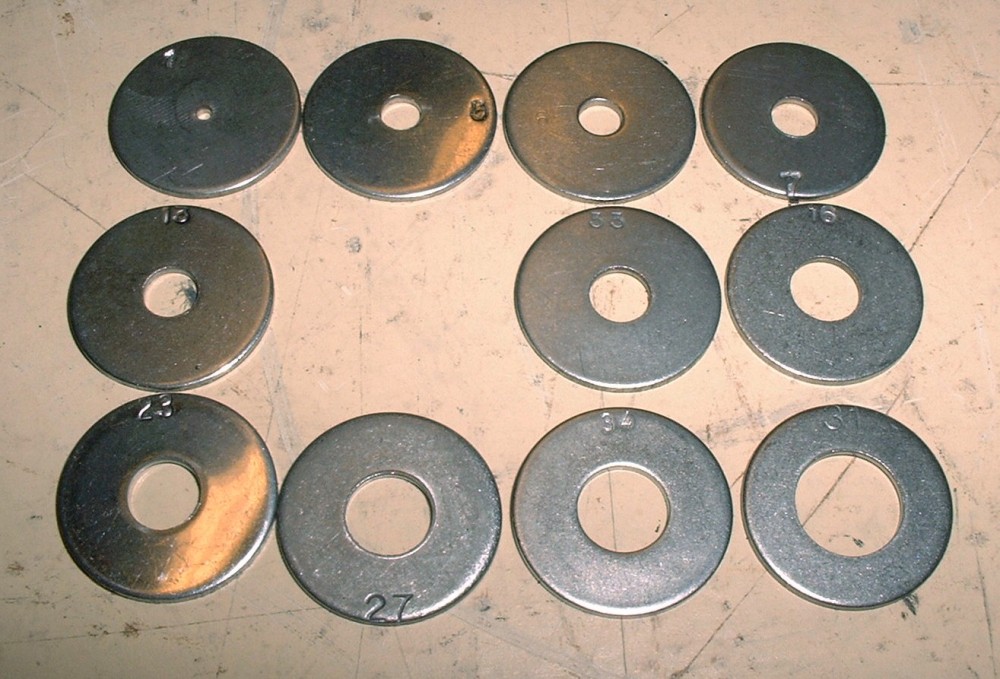
These washers are actually calibrated orifices to control the rate of exhaust gases introduced into the intake. You only use one of them, so to know which one you need, you must be able to cross reference some of the information stamped into your OEM EGR valve. Depending on the manufacturer of your new valve, you may need either a three letter code or the OEM part number which are both found on the upper half of the diaphram housing. Though barely legible in the next photo, the three letter OEM code is CXF and the part number is 17085897.
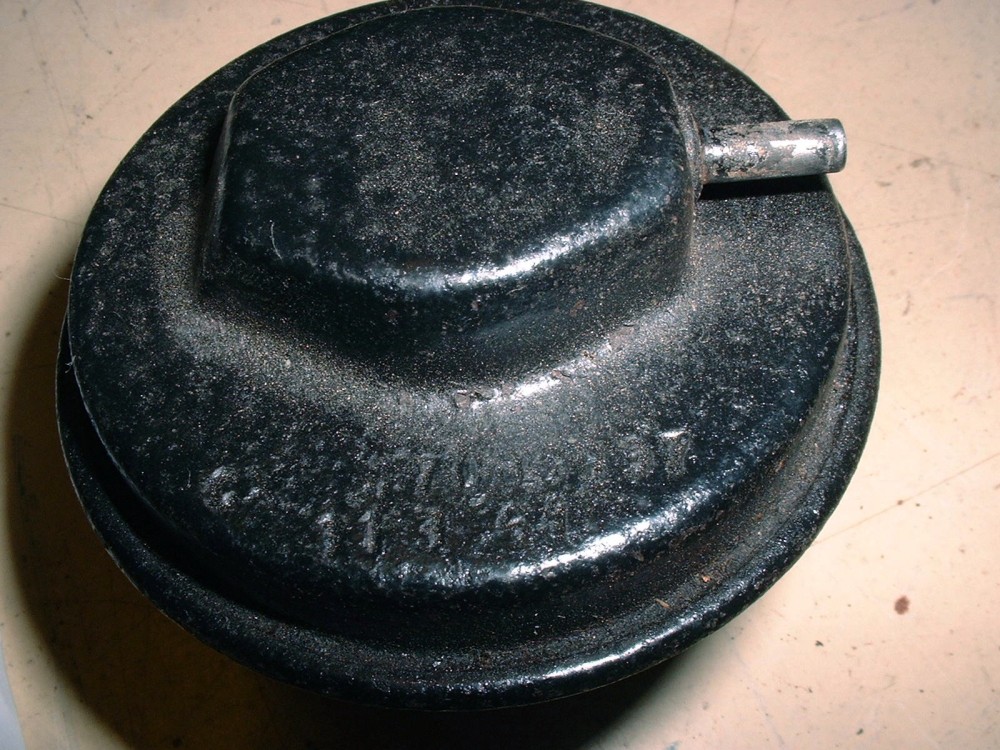
I've installed new EGR valves on several cars and this is the first time I've needed the part number as opposed to the three letter code. If you can't read yours, then you can substitute the information from mine to determine which orifice you need. A chart in the box with the new valve indicated that I needed to use the washer with the number 11 stamped into it:
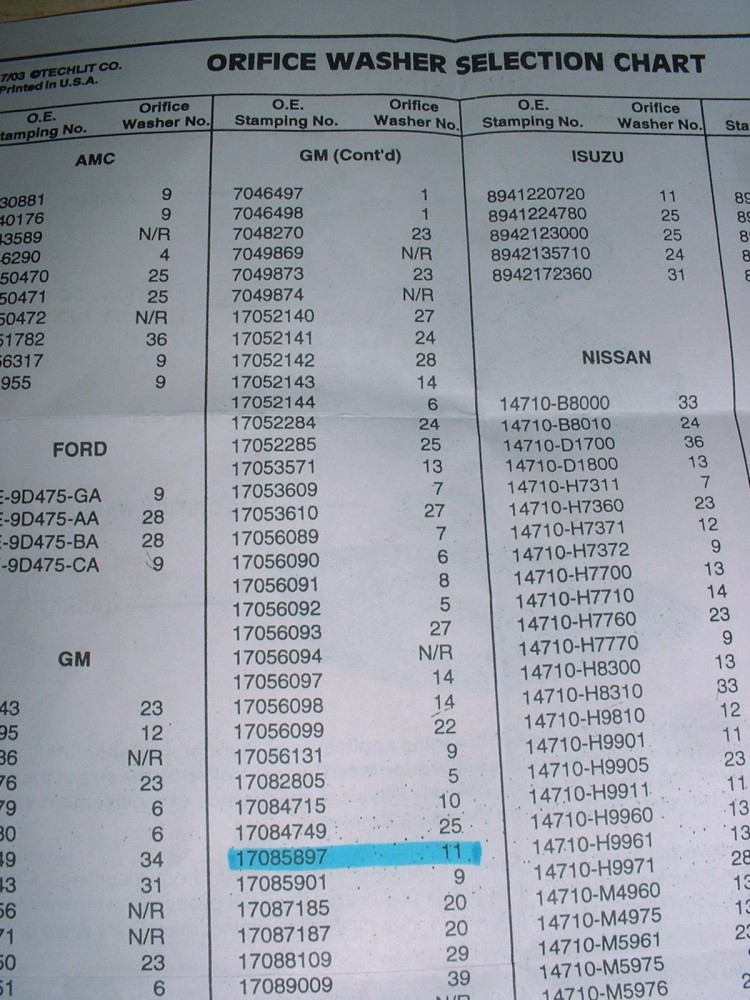
The washer gets installed into the bottom of the valve in a shallow recess:
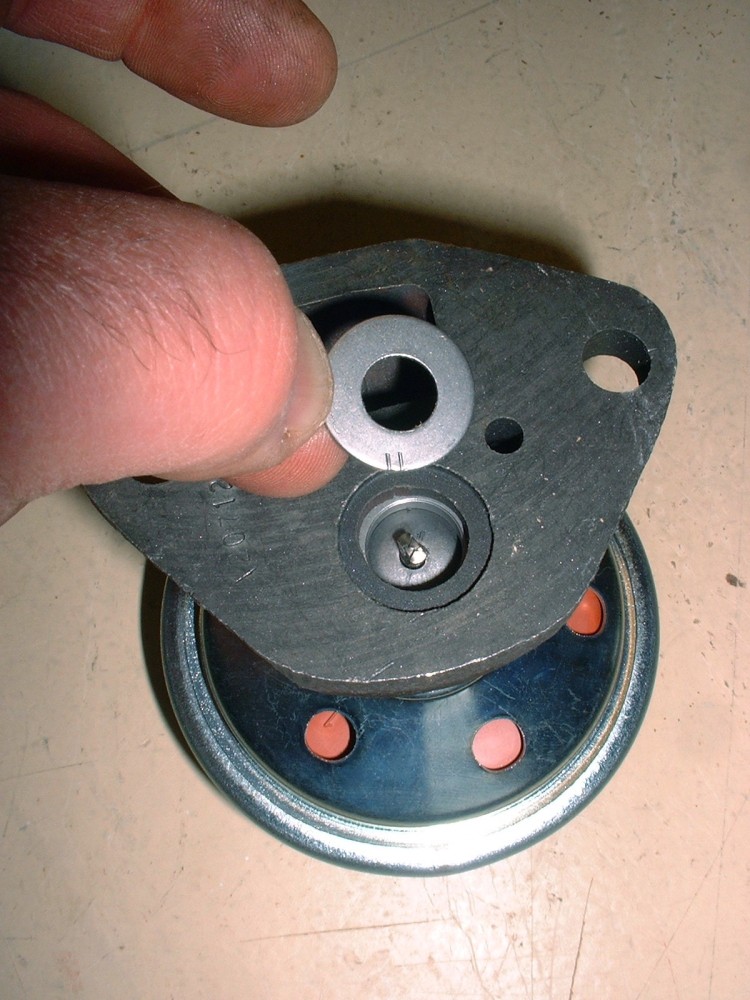
Then it must be staked into place using a hammer and a center point punch in a couple spots around the recess:
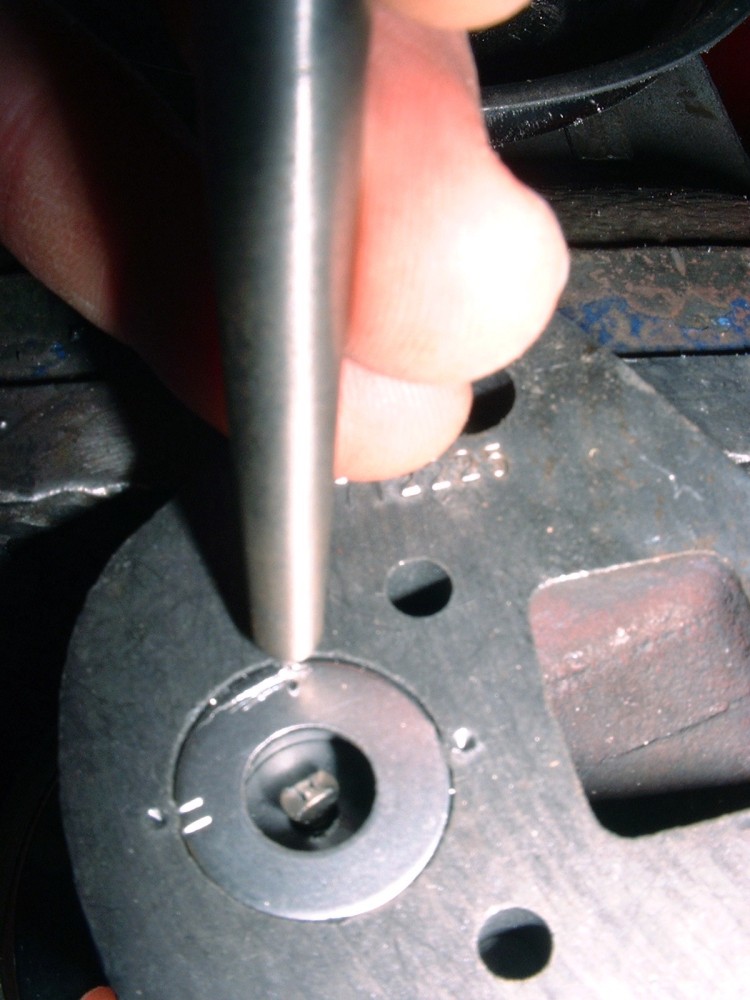
To keep from crushing the diaphram while staking the orifice plate, I turned the valve upside down leaving the mounting flanges resting on the top surface of the jaws in a 5" vice. Although it looks close, the diaphram isn't resting on the vice at all, just the mounting flanges are:
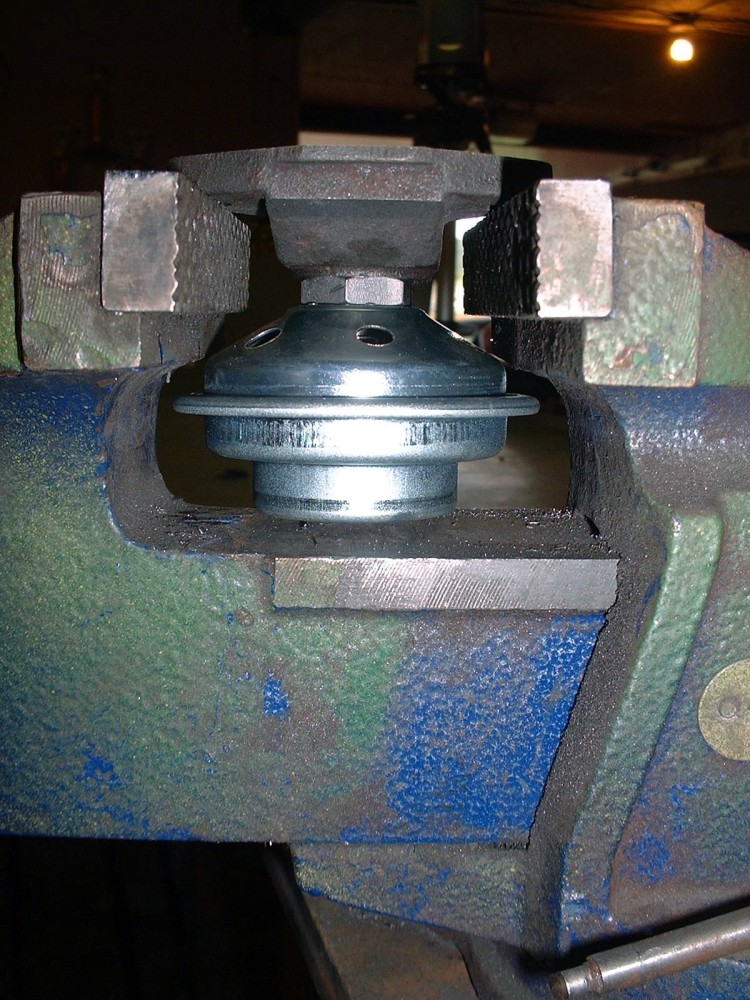
So as not to lose the OEM part number information in the future, the BWD valve comes with a sticker to write it on as well as a chemical resistant clear sealing sticker to apply over top:
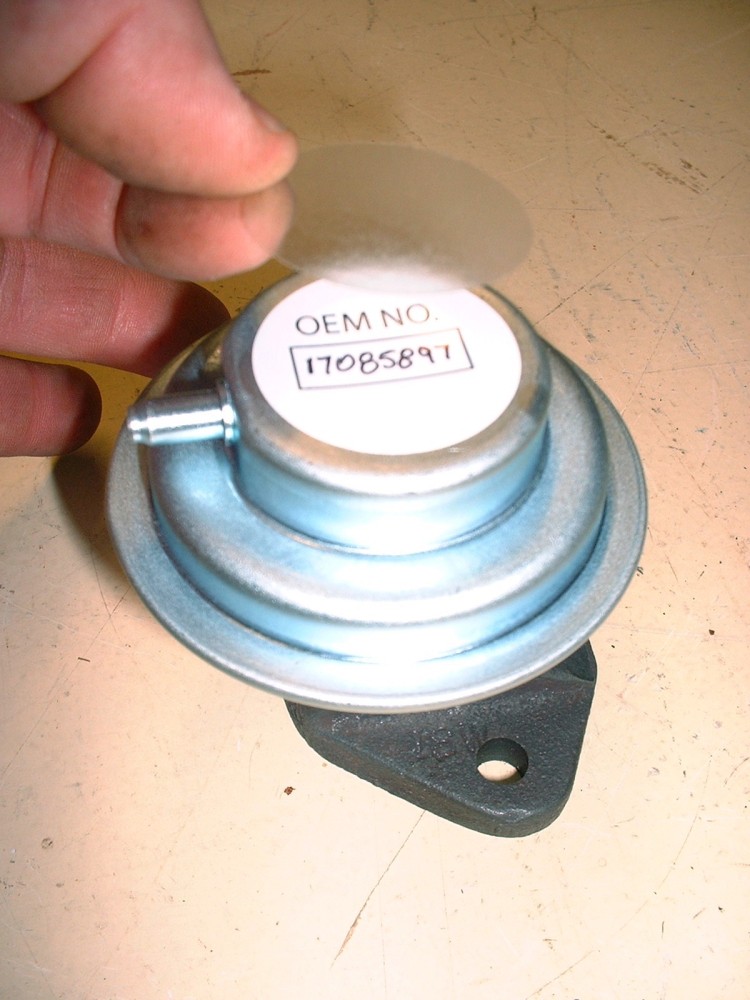
For my own files, I measured and recorded the diameter of the number 11 orifice in case it becomes difficult to cross reference the part number in the future. It measures 0.342".
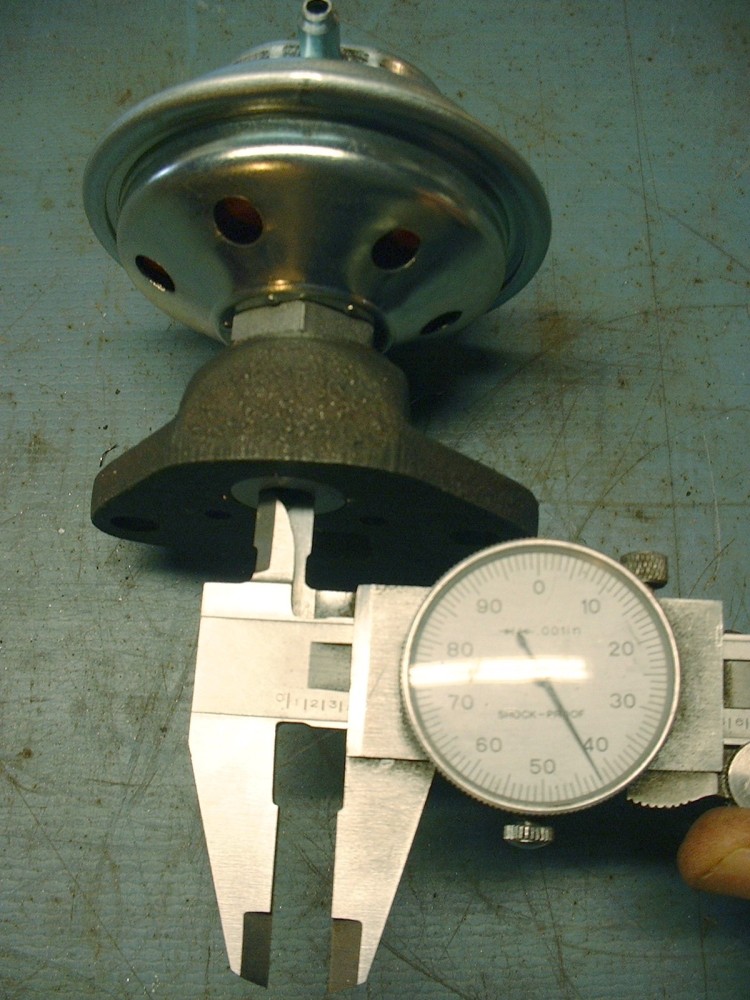
The next step is to remove the old gasket from the EGR adapter in the engine bay. I found mine was stuck on pretty well until I took a thin scraper and caught the edge of it:
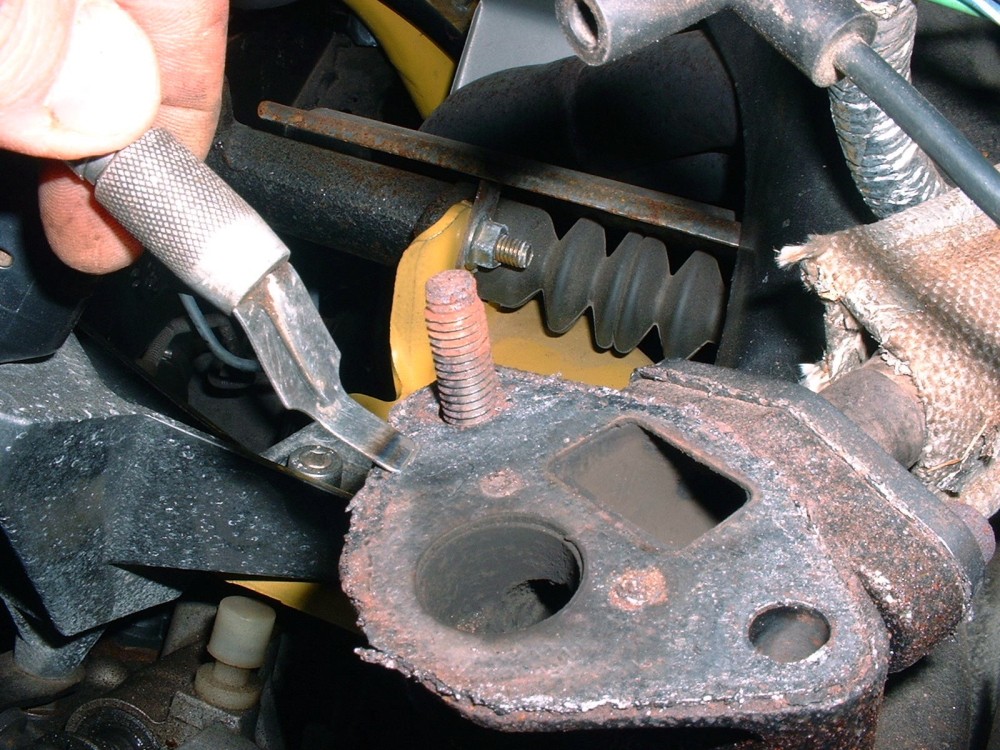
Then it just popped off in one piece, although I had to scrape the mounting surface just a little to get some left-over residue off of it:
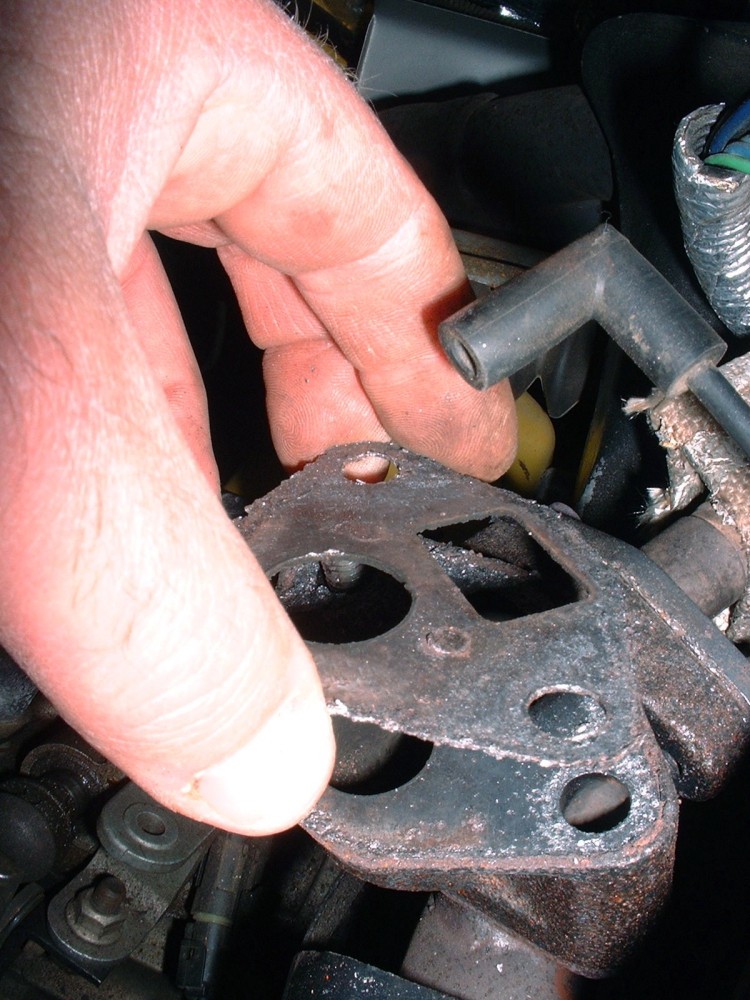
The studs holding the valve to the engine get really hot so they tend to rust just like the exhaust manifold studs do. To make the job easier the next time around, I added some anti-seize compound.

Then slipped the new gasket in place:
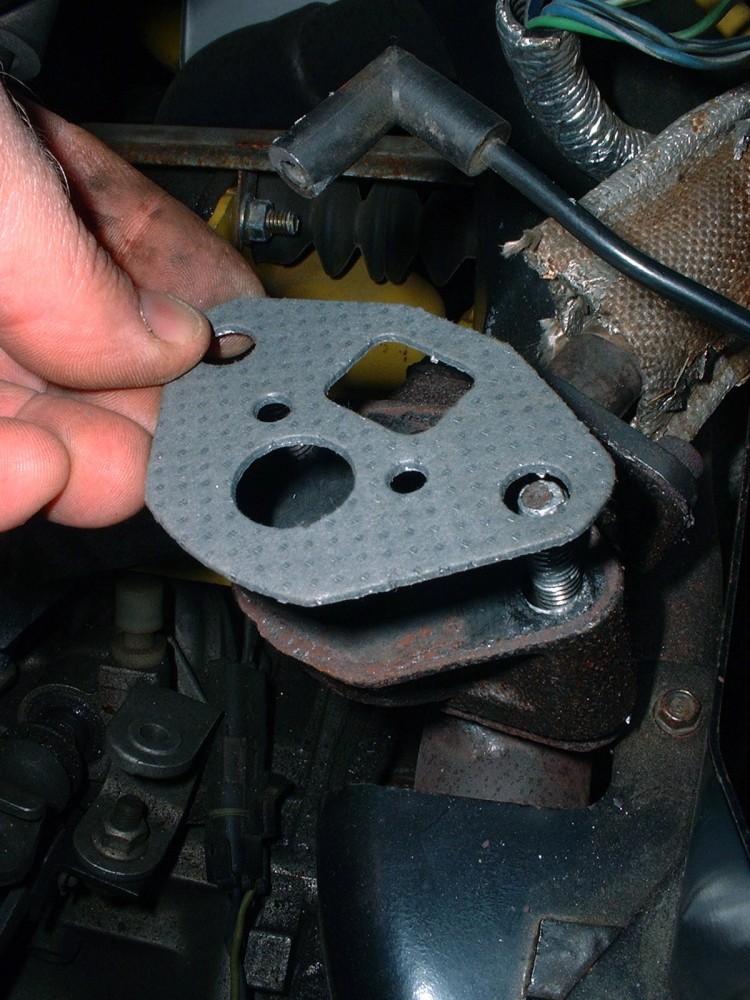
The EGR vavle was next but I found the vacuum port was rotated 180 degrees from the OEM one. After reading the instructions in the BWD box, all I had to do was grasp the diaphram tightly and rotate it clockwise to where ever I needed it. It was tight but do-able by hand:
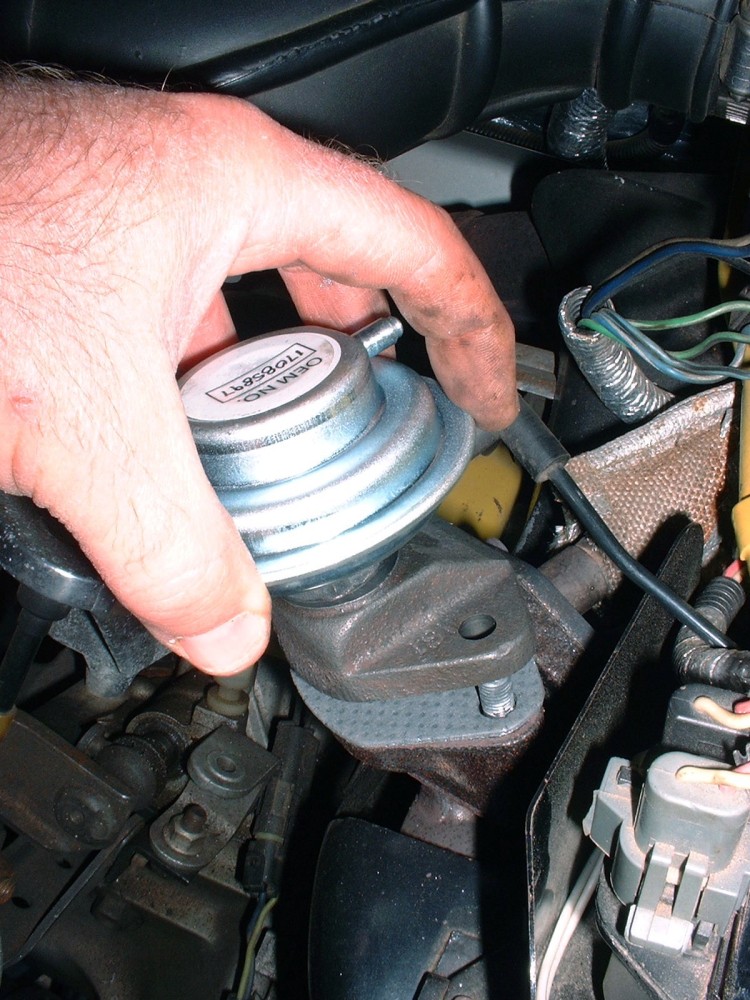
The old nuts were too rusty to re-use so I found some new ones in my shop supplies. They are M8 X 1.25 for those who want to buy new ones ahead of time. The FSM says they should get torqued to 13 - 18 lbft, though I don't know how anybody could fit a torque wrench in there to do this properly. I just gave them a calibrated "ooomph". 
The last thing to do is to connect the vacuum line to the diaphram port:
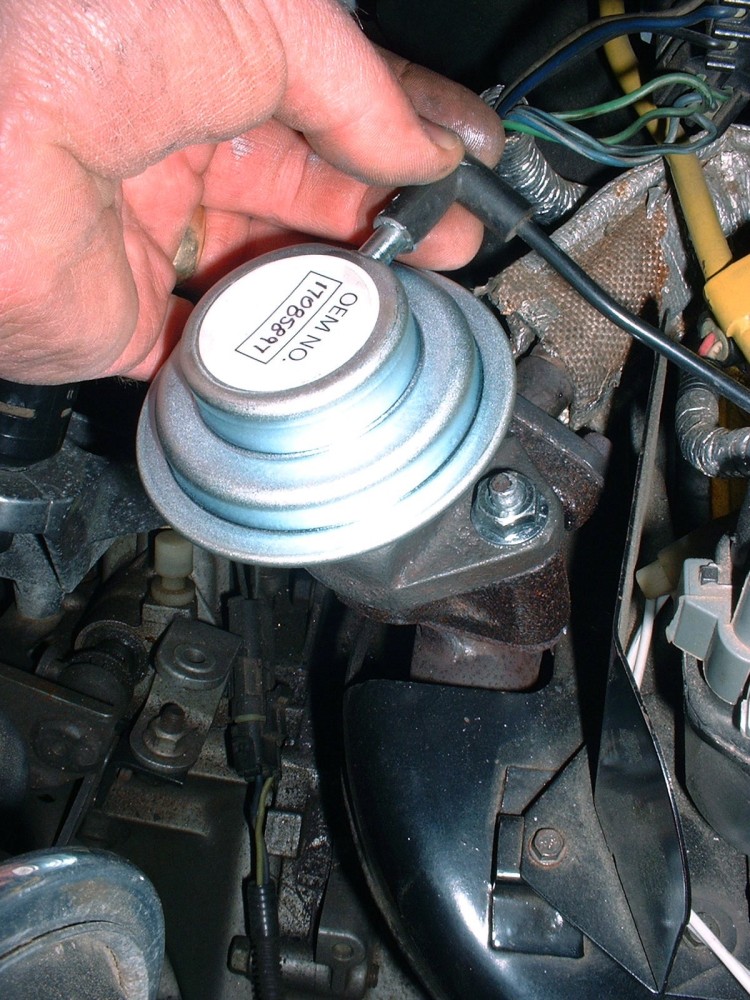
It's an easy 15 - 30 minute job depending how successful you are at getting the two nuts off in the first place. There's lots of potential for either the studs to break or the nuts to get rounded off in which case you're looking at even more time.
|
|

|
Patrick
|
MAY 26, 07:55 PM
|
|
Great write-up. 
| quote | Originally posted by Bloozberry:
These washers are actually calibrated orifices to control the rate of exhaust gases introduced into the intake. You only use one of them, so to know which one you need, you must be able to cross reference some of the information stamped into your OEM EGR valve.
|
|
Blooz, any idea why do they do it in that manner as opposed to simply referring to year and size of engine, etc?
Years ago I had to replace the EGR valve on an '87 duke, and if I remember correctly, the EGR valve I was replacing was an aftermarket unit with no numbers on it to go by. I ended up just guessing as to which "washer" to use with the new unit. I didn't feel very comfortable about that.
|
|

|
Bloozberry
|
MAY 26, 08:02 PM
|
|
Thanks Patrick. I have no idea what the numbers relate to... in my photo where the washers are all laid out, I've ordered them from smallest to largest size of the hole, but there seems to be no rhyme or reason how they assigned the numbers to each since they're all over the map. 
|
|

|
GodSend
|
JUN 14, 09:46 PM
|
|
Broke one of my studs something fierce trying to do the very same job. I took the other stud out and drove to 3 or 4 different auto places to try to match up a replacement. No luck. To make matters worse I lost the good stud I had for reference (and the bolt).
Does anyone know the thread specifics for the stud so I can go to a fastener place and hopefully find something with their help.
|
|

|
Bloozberry
|
JUN 14, 10:14 PM
|
|
|
I may be able to find one on a spare engine that I can measure for you, but in the meantime you might try checking with a dealership. The original part number was 10034956. If that fails, then one end is definitely M8 X 1.25, and the other end is likely the same. The length can be easily measured to suit.
|
|

|
GodSend
|
JUN 15, 10:29 PM
|
|
| quote | Originally posted by Bloozberry:
I may be able to find one on a spare engine that I can measure for you, but in the meantime you might try checking with a dealership. The original part number was 10034956. If that fails, then one end is definitely M8 X 1.25, and the other end is likely the same. The length can be easily measured to suit. |
|
Found the missing stud, so thats helpful.
Does 1.25 refer to the threads? I know the nut threads onto either side of the stud,so the threads are the same.
|
|

|
Bloozberry
|
JUN 15, 11:29 PM
|
|
|
Yes... M=metric, 8=diameter in mm's, and 1.25=thread pitch.
|
|

|
Kitskaboodle
|
JUL 17, 11:17 PM
|
|
Bad news...,
I have already installed the EGR valve and according to your original thread your supposed to be able to rotate the top housing to align the vacuum port. You said yours was tight but you were just able to rotate it slightly clockwise. Well, mine turns round and round with very little resistance. In fact it's almost wobbles from side to side. This can't be right. It's an AC Delco part. Looks like I'm going to have try and return it back to RockAuto. Crap! 
Kit
|
|

|
NiotaFiero
|
SEP 24, 11:47 AM
|
|
[QUOTE]Originally posted by Bloozberry:
About a week ago I went to take the Fiero out for a drive but found it idled strangely after start-up. The idle was high and when I goosed the gas it would stutter and stumble... definitely not normal. It didn't take very long to find the culprit: a broken EGR valve. When you say a broken EGR valve, what do you mean by "broken".
]The reason I ask is that somewhere I read that you should be able to grasp the valve and squeeze it inward, mine is as solid as a rock, there is no squeezing it at all. So does that mean that it is bad?[This message has been edited by NiotaFiero (edited 09-25-2013).]
|
|

|
Bloozberry
|
OCT 20, 09:47 PM
|
|
|
Sorry for the late reply... I don't check in this section very often. When people say you should be able to move the valve, they mean that you will find a set of large holes in the bottom of the circular metal diaphragm housing that you can reach into and push upwards on the diaphragm. The diaphragm should move upwards with very little resistance, if it doesn't then the valve is seized. This wasn't the problem with mine though. On mine, the diaphragm housing broke off from the base that it's normally attached to.
|
|
    
  |
|
